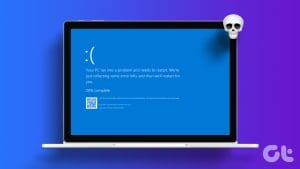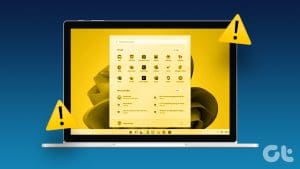Then, chooseWindows Updatefrom the sidebar and clickAdvanced optionson the right.
Step 2:SelectOptional updates.
In the following window, youll see updates for different drivers installed on your rig.

Download thegraphics driver updateand check to see if the problem is fixed.
This is because booting your Windows in safe mode ensures minimum applications are running on your rig.
Safe mode also temporarily disables third-party applications and runs your system with default prefs.

To open your system in safe mode, go through this.
Step 1:Press theWindows + R keysto launch the Run dialog box.
Then, typemsconfigand pressEnter.

Step 2:In the System Configuration window, select theBoottab and check theSafe bootbox.
If you want to use a data pipe connection during safe mode, check the box for theNetworkoption.
Step 3:you’re able to then complete the process by pressingApply>OKto update the changes.

Step 4:Rebootyour system, and your system will launch in safe mode.
By keeping the Windows OS updated, you’re free to fix the potential bugs.
To update Windows, open theSettings app> selectWindows Updatefrom the sidebar > clickCheck for updateson the right.

your machine will now look for any OS updates and download them automatically without much user input.
To fix this, heres how to disable overclocking.
Step 1:Open theStartmenu > typeEdit power planin the search bar > hitEnter.

Step 2:ChooseChange advanced power prefs.
Step 3:In the Power Options window, expandProcessor power managementby clicking the plus sign next to it.
Then, double-clickMaximum processor state.Change the setting to 99% forOn batteryandPlugged in.

Step 4:ClickApplyandOKto save the changes.
After that, uninstall any overclocking software on your machine and see if the issue persists.
Alternatively, disable overclocking through the BIOS.

Step 2:Typesfc /scannowin the elevated Command Prompt window and hitEnter.
Command Prompt will take some time to execute the command.
Once its complete, reset your system and check for the issue.

Step 1:Open theSettings app> chooseWindowsUpdatefrom the sidebar > clickUpdate historyon the right.
Step 2:ClickUninstall updatesto view the list of installed applications.
Step 3:Check the installed dates to confirm recently updated applications.

Click theUninstallbutton next to the most recent update > selectUninstallagain to confirm.
Also Read:How to manually cause BSOD in Windows
Was this helpful?
The content remains unbiased and authentic and will never affect our editorial integrity.








